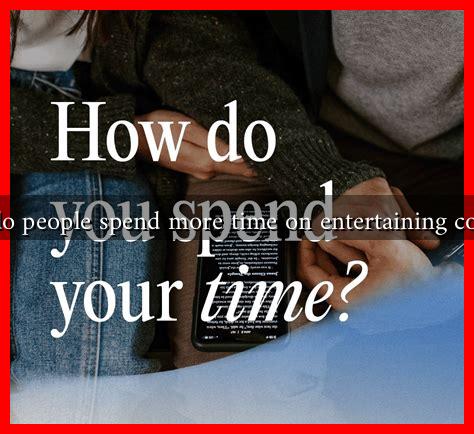-
Table of Contents
Why Do People Spend More Time on Entertaining Content?
In an age dominated by digital media, the consumption of entertaining content has skyrocketed. From binge-watching series on streaming platforms to scrolling through social media feeds filled with memes and videos, people are increasingly drawn to content that entertains rather than informs. But what drives this behavior? This article explores the psychological, social, and technological factors that contribute to our preference for entertaining content.
The Psychological Appeal of Entertainment
One of the primary reasons people gravitate towards entertaining content is its psychological appeal. Engaging with entertaining material can provide a temporary escape from reality, allowing individuals to unwind and relax. Here are some psychological factors that contribute to this phenomenon:
- Escapism: Entertainment offers a break from daily stressors. For instance, during the COVID-19 pandemic, many turned to streaming services like Netflix for comfort and distraction.
- Emotional Connection: Stories and characters in movies, shows, and books can evoke strong emotions, making viewers feel connected and understood.
- Instant Gratification: Entertaining content often provides immediate pleasure, which can be more appealing than the delayed rewards of educational or informative content.
The Role of Social Media
Social media platforms have transformed how we consume content. With algorithms designed to prioritize engaging material, users are often bombarded with entertaining posts. This leads to a cycle of consumption that reinforces the preference for entertainment. Consider the following:
- Viral Trends: Platforms like TikTok and Instagram thrive on trends that encourage users to create and share entertaining content, leading to increased engagement.
- Community Engagement: Entertaining content often fosters a sense of community, as users share laughs and experiences, creating bonds over shared interests.
- Influencer Culture: Influencers often curate entertaining content that resonates with their followers, further driving the demand for such material.
Technological Advancements and Accessibility
Technological advancements have made it easier than ever to access entertaining content. Streaming services, social media, and mobile apps have revolutionized how we consume media. Key factors include:
- On-Demand Access: Services like Netflix and Hulu allow users to watch what they want, when they want, making it easier to indulge in entertainment.
- Mobile Devices: Smartphones enable users to consume content anywhere, anytime, leading to increased engagement with entertaining material.
- Content Variety: The sheer volume of available content—from movies and series to podcasts and YouTube videos—ensures that there is something for everyone.
Case Studies and Statistics
Several studies highlight the growing trend of entertainment consumption. According to a report by Nielsen, adults in the U.S. spend an average of 11 hours per day consuming media, with a significant portion dedicated to entertainment. Additionally, a survey by Statista revealed that 70% of respondents preferred watching entertaining content over educational material during their leisure time.
Moreover, platforms like YouTube have seen exponential growth in viewership, with over 2 billion logged-in monthly users. This indicates a clear preference for video content that entertains, as users often turn to the platform for light-hearted videos, vlogs, and comedic sketches.
Conclusion: The Future of Content Consumption
The preference for entertaining content is driven by a combination of psychological needs, social dynamics, and technological advancements. As we continue to navigate an increasingly digital world, it is likely that the demand for entertainment will only grow. Understanding these factors can help content creators and marketers tailor their strategies to meet audience preferences effectively.
In summary, the allure of entertaining content lies in its ability to provide escapism, emotional connection, and instant gratification, all while being easily accessible through modern technology. As consumers, recognizing our motivations can lead to a more balanced approach to content consumption, ensuring we also engage with informative material that enriches our lives.
For further insights into media consumption trends, you can explore resources from Nielsen and Statista.

